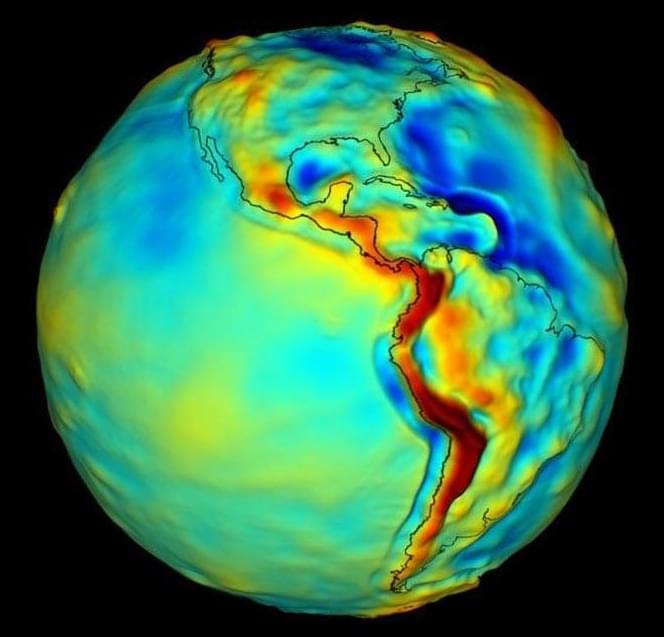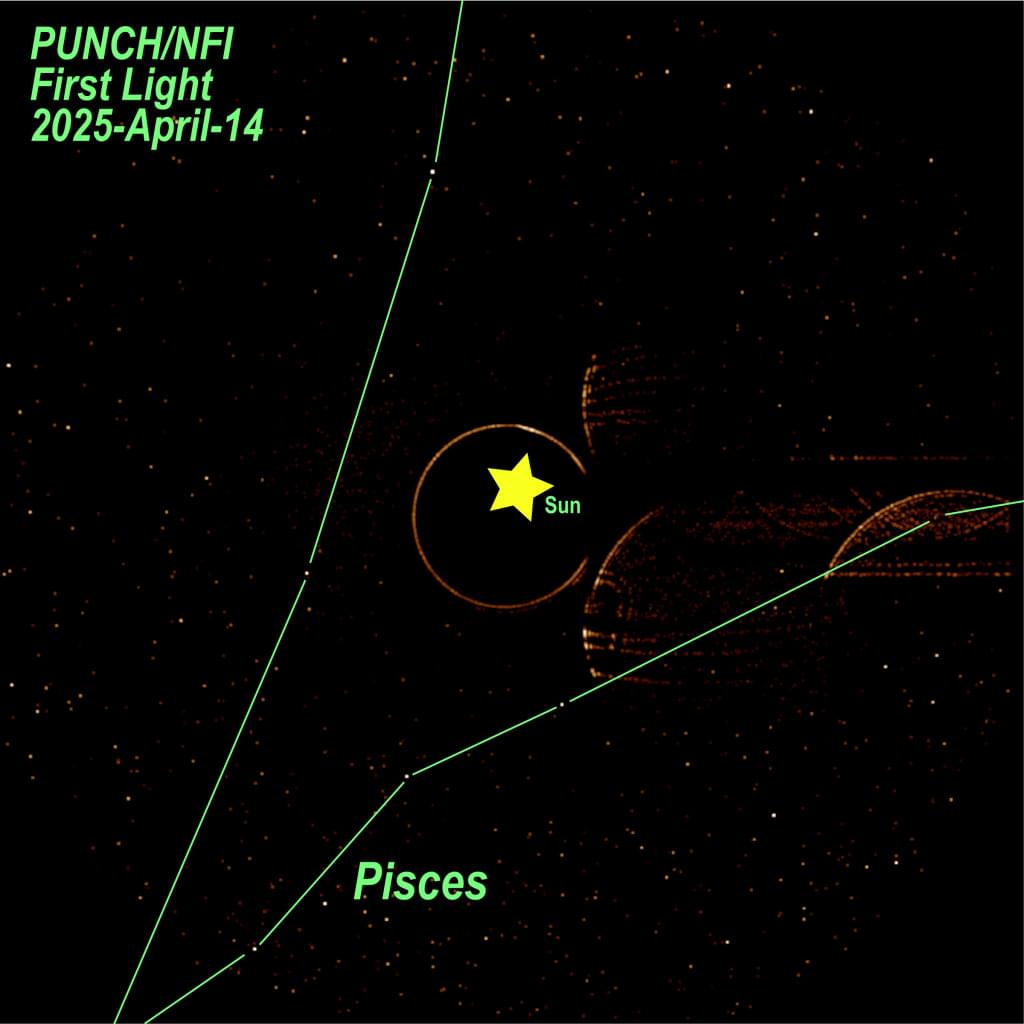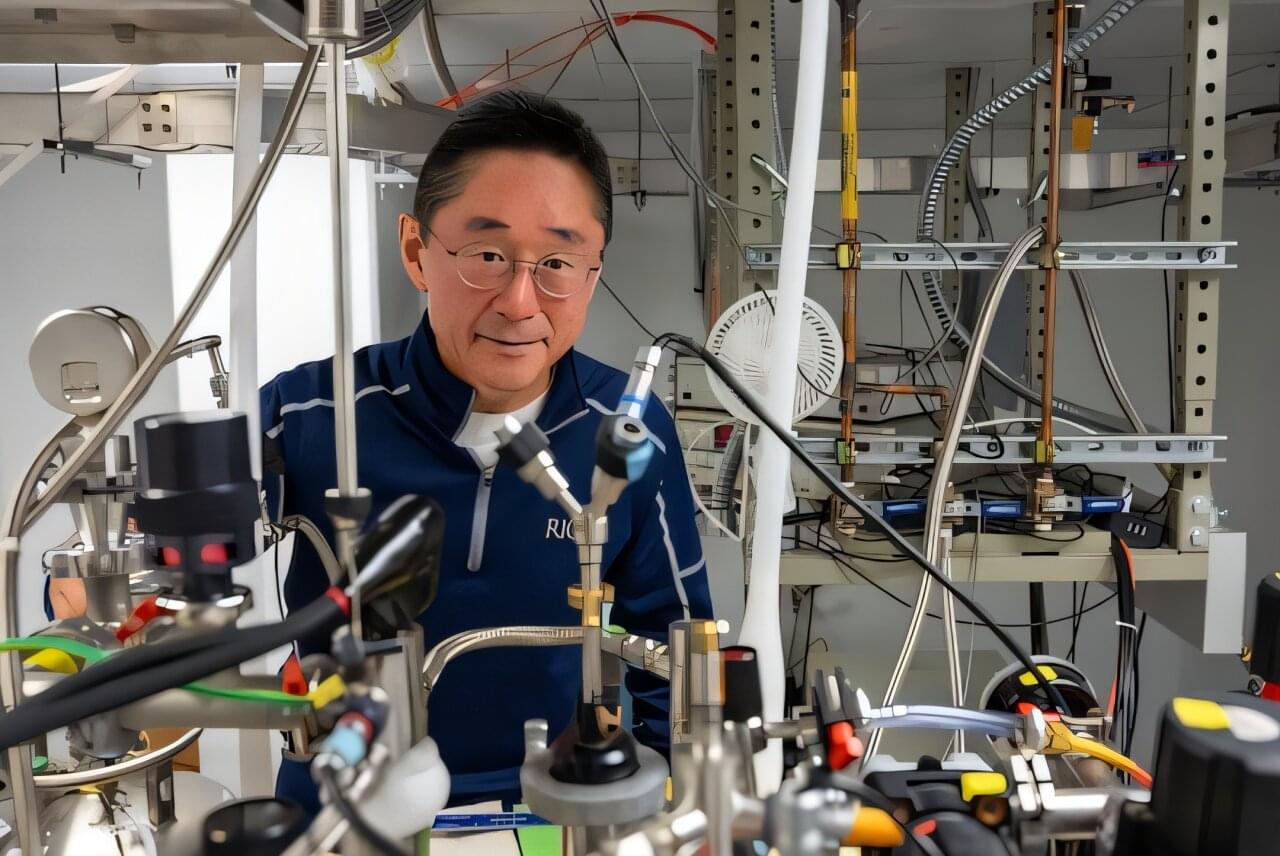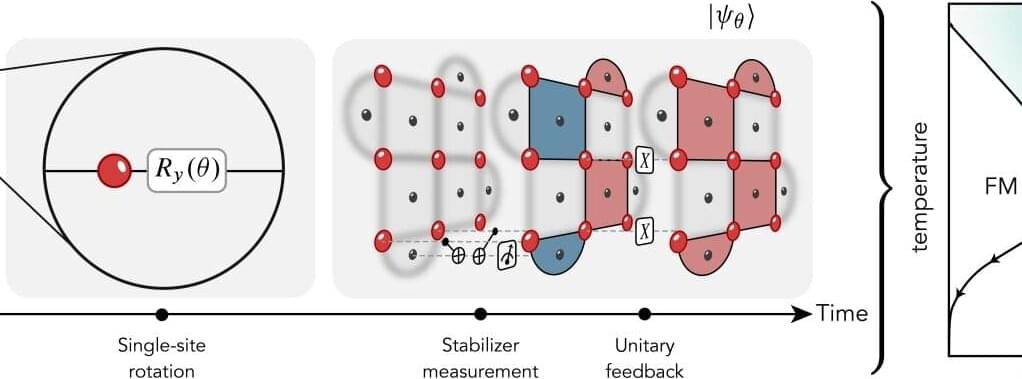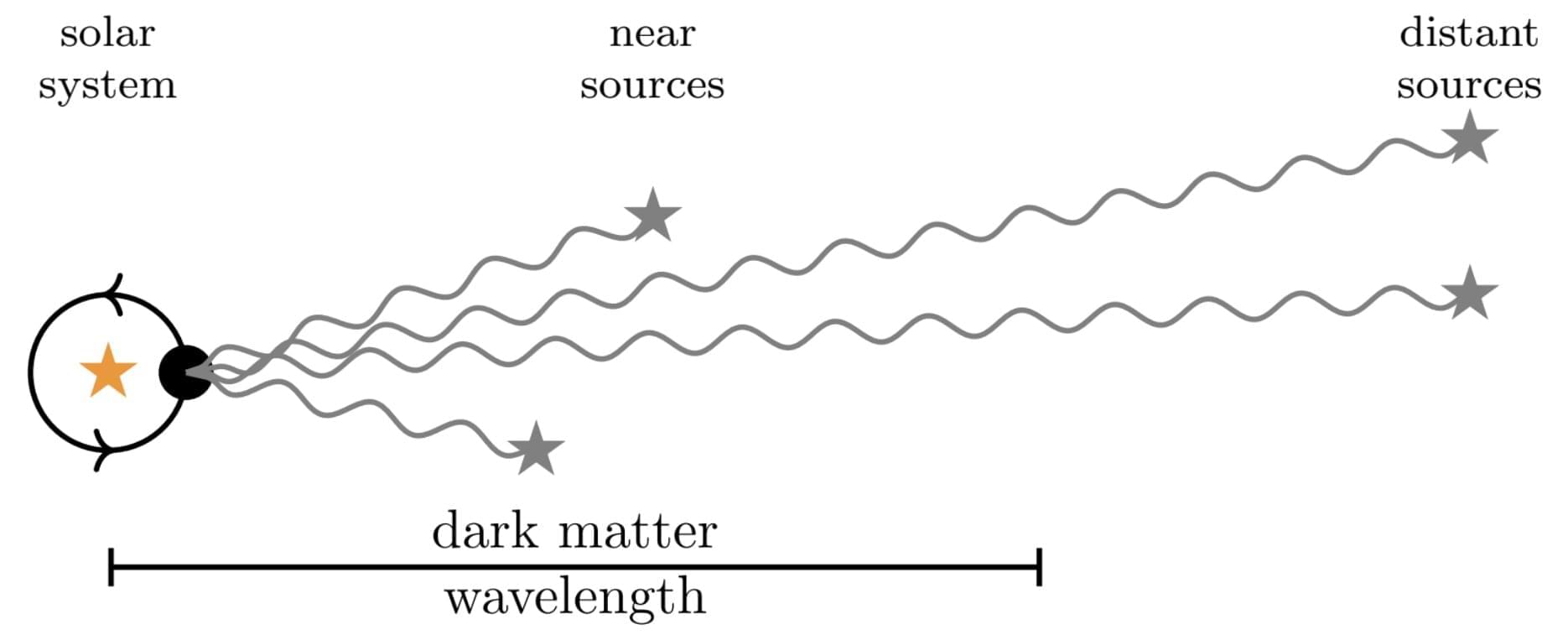The NFI opened its eye to the sky first on April 14, imaging the Sun against the background stars of the constellation Pisces. The view here has been specifically filtered to bring out those background stars, which are otherwise blotted out by the bright zodiacal light generated by sunlight glinting off dust particles in the inner solar system. Also visible is a sliver of the Sun’s corona at center, reminiscent of the view during an annular solar eclipse.
You might notice several strange, streaky crescent-shaped artifacts at right. These arise from a small misalignment between the imager and the Sun, allowing stray sunlight to glint off the optics where it’s not quite blocked by the coronagraph. Engineers will use this and subsequent images to adjust the NFI’s position on the sky to bring it in full alignment with our star and eliminate stray light in future scientific data. Ultimately, that calibration will allow just one percent of the corona’s light through to the imager, providing clear views of faint structures and changes within the corona as the Sun spews material out into space.
Two days later, on April 16, the three WFIs got their first look at the Sun, taking in a broad view across the solar system. These instruments are designed to look at the region of space out to some 45° from the Sun’s position, roughly out to the distance of Earth’s orbit projected on the sky. Their fields of view don’t overlap, but instead form a trefoil pattern that rotates over time.
